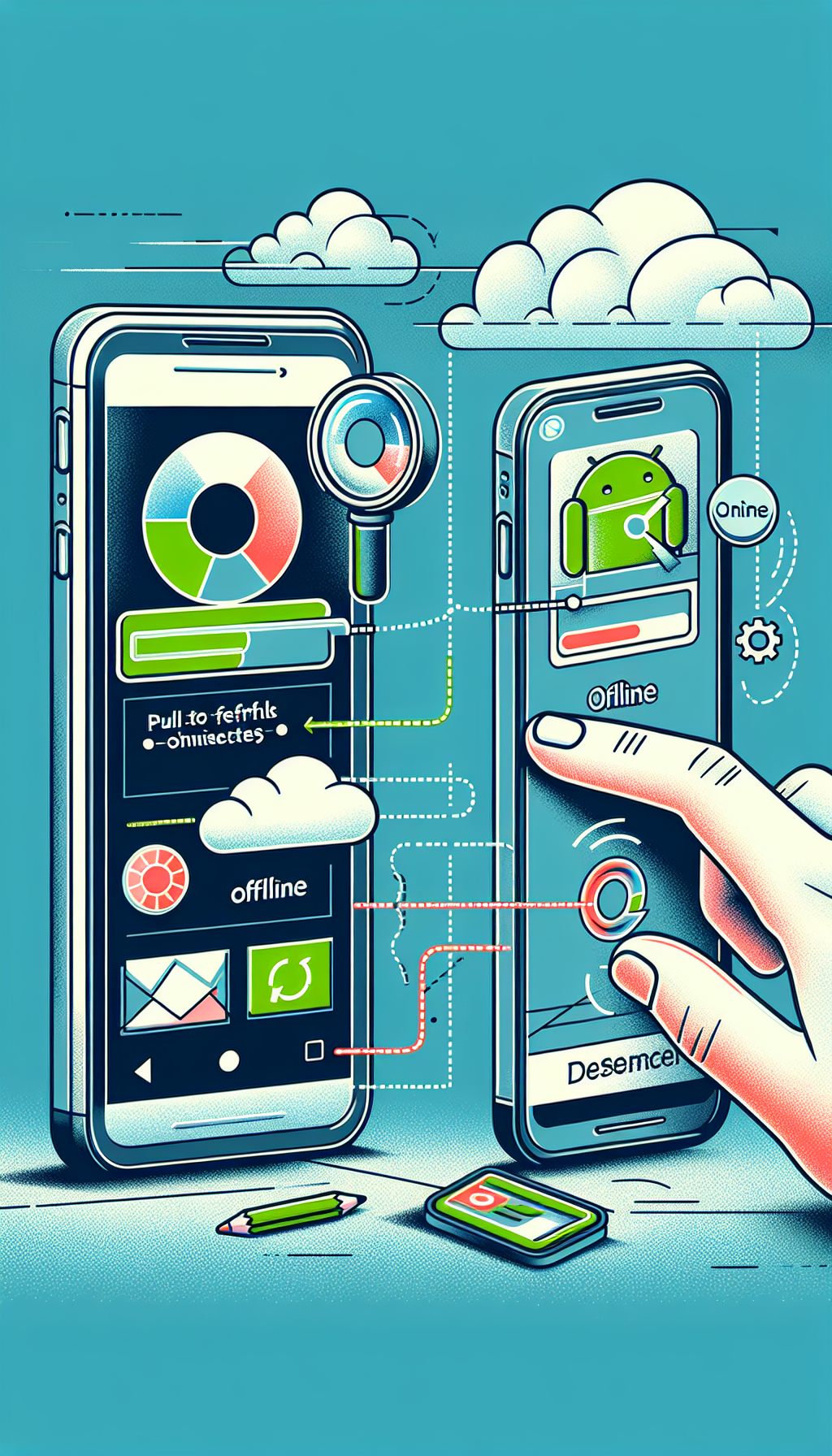
Understanding User Retention in Android WebView Apps
User retention stands as one of the most crucial metrics for any mobile application. For Android WebView apps, retaining users can prove particularly challenging if the experience feels less reliable or responsive compared to native apps. A key factor is how well the app handles web content refreshes and connectivity issues. In this deep dive, we explore effective techniques—specifically Pull-to-Refresh and Offline Fallback—to optimize user experience and improve retention rates.
The Power of Pull-to-Refresh in WebView Apps
Pull-to-Refresh is a familiar gesture in the world of mobile apps, allowing users to manually refresh the displayed content. By integrating this intuitive feature into your Android WebView app, you empower users to quickly resolve minor glitches or view the latest updates without navigating away or restarting the app.
- Enhanced Control: Users feel more in control when they can actively refresh pages as needed.
- Reduced Frustration: Quick reloads mean fewer abandoned sessions caused by temporary network hangs or stale content.
- Modern UX Standards: Most successful apps implement Pull-to-Refresh, making it an expected convenience.
Implementing Pull-to-Refresh in your Android WebView app usually requires only a few lines of code and the integration of SwipeRefreshLayout. This simple addition can significantly boost how users perceive and interact with your app.
Offline Fallback: Supporting Users Beyond Network Limitations
Mobile users expect uninterrupted access, but unreliable networks are inevitable, especially for users on-the-move or in low-coverage areas. Providing an Offline Fallback screen in your WebView app is essential for keeping users engaged rather than frustrated when connectivity drops.
- Custom Error Messages: Replace generic browser errors with branded, helpful messages that explain the offline situation.
- Cached Content: Where possible, show previously loaded content or cached resources, so users still find value while offline.
- Encouragement to Retry: Offer a clear call-to-action, such as a retry button, so users know what to do next.
These strategies not only demonstrate technical robustness but also convey thoughtful concern for your users’ needs—both factors that enhance retention.
Combining Pull-to-Refresh and Offline Fallback for Optimal Retention
While each feature offers distinct advantages, their true power lies in combination. Pull-to-Refresh allows users to recover from brief outages or loading errors, while a well-designed Offline Fallback reassures them during extended connectivity issues. Together, these techniques minimize churn caused by frustration and create an overall smoother experience, encouraging users to revisit your app regularly.
Accelerate Your Progress with Smart Solutions
If you want to implement both features without diving deep into complex coding, modern tools like WebViewGold offer a quick and simple way to convert your website into a full-featured Android app. WebViewGold includes built-in support for Pull-to-Refresh and customizable offline fallback screens, letting you focus on growth and content rather than technical details.
Final Thoughts on User Experience Optimization
Investing in user experience is an investment in long-term retention. By enabling Pull-to-Refresh and providing robust Offline Fallback options, your Android WebView app can deliver a seamless, frustration-free journey. Whether you build these features yourself or leverage solutions like WebViewGold, you ensure your users remain engaged and satisfied every step of the way.

Leave a Reply